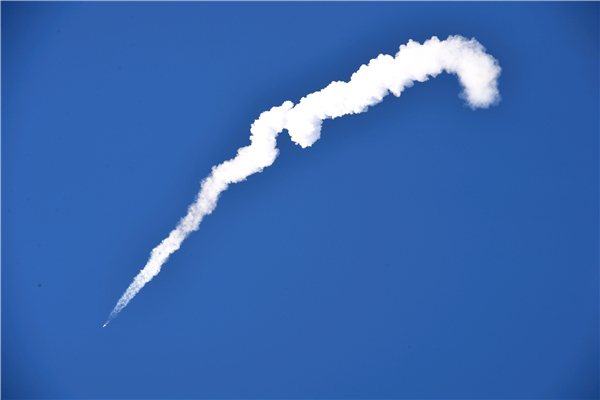
Two remote-sensing satellites are successfully sent into space on Oct 9 from the Jiuquan Satellite Launch Center in northwestern China.[Photo/Xinhua]
JIUQUAN — Two remote-sensing satellites were successfully sent into space on Oct 9 from the Jiuquan Satellite Launch Center in northwestern China.
The satellites, members of the Yaogan-32 family, were launched by a Long March-2C rocket with an attached upper stage at 10:43 am.
It was the first flight of the Yuanzheng-1S upper stage, known as the Expedition-1S in English. The China Academy of Launch Vehicle Technology said it operated well with the Long March-2C rocket and significantly improved its carrying capacity.
The satellites have entered their planned orbits and will be used for electromagnetic environment surveys and other technology tests.
Upper stages are independent spacecraft installed on a carrier rocket that are capable of restarting their engines multiple times in space to allow them to send different payloads into different orbits. They are also referred to as space shuttles.

Two remote-sensing satellites are successfully sent into space on Oct 9 from the Jiuquan Satellite Launch Center in northwestern China.[Photo/Xinhua]
In February, a Yuanzheng-1 upper stage helped send two satellites into orbit on a single carrier rocket for China’s BeiDou Navigation Satellite System.
The Yuanzheng-1S, a simplified version of the Yuanzheng-1, is designed for short flights, and will be mainly used for commercial launches, said Cui Zhaoyun, deputy chief designer of the upper stage.
Previously, the Long March-2C rocket was capable of sending payloads of about 1.2 metric tons into a sun-synchronous orbit. Cui said installation of the Yuanzheng-1S upper stage boosted the carrying capacity of the rocket to two tons.
Launch on Oct 9 was the 286th mission of the Long March rocket series.